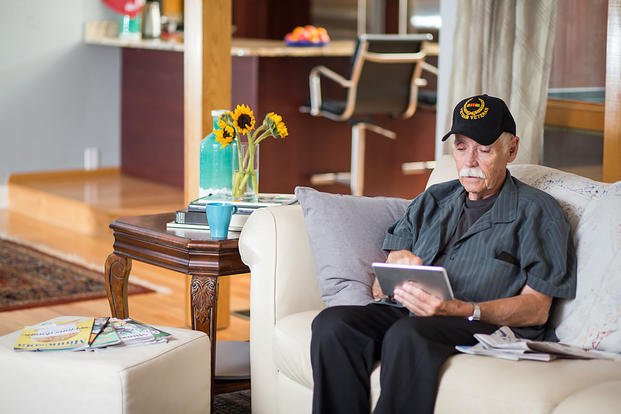The U.S. Department of Veterans Affairs (VA) faces the unique challenge of providing comprehensive care to a community that is geographically dispersed, often rural, and dealing with diverse health needs often much more extensive than checkups. Telehealth initially began as a practical solution to access problems, but in 2025 it has evolved into a much broader system. Today, VA telehealth is not just about scheduling a video appointment with a doctor. It is also about building whole-person health services reaching veterans in their homes and giving them tools to improve daily life.
A New Era of Virtual Care
Telehealth within VA now covers primary care, specialty consults, mental health visits and medication management. What makes 2025 different is the way the system has matured. Veterans can log into VA Video Connect from a laptop or smartphone or visit an ATLAS site – a private telehealth booth in a local community center or library – for secure appointments if broadband access is limited.
The VA is also planning to eliminate copays for telehealth visits, and in the coming year it also plans to support local partners with grants to expand community-based access points. The result is a system where distance, transportation challenges, and even financial barriers no longer prevent veterans from receiving timely care.
Beyond Medicine: Mind-Body Care
Perhaps the most striking change is the expansion of integrative health service offered remotely. Tele-yoga has become a fast-growing program. Through partnerships with groups like Veterans Yoga Project, veterans can join live online yoga classes or follow guided sessions tailored for stress reduction, pain management, or trauma recovery. Chair yoga and Yoga Nidra meditation are also offered virtually through VA’s War Related Illness and Injury Study Centers, making these services accessible even to those with mobility limitations.
These are not fringe add-ons. They are part of the VA’s Whole Health System, which emphasizes patient-centered approaches to resilience and healing. For veterans dealing with chronic pain, PTSD, or anxiety, a yoga session at home can now be as much a part of treatment as medication management.
Fitness, Nutrition, and Daily Health
Telehealth is also supporting the daily lifestyle changes shaping long-term health. The VA’s EnhanceFitness program, offered virtually three times per week, gives veterans guided exercises in strength, balance, and cardio at home. The Healthy Teaching Kitchen brings VA dietitians into the homes of veterans via video, leading cooking demonstrations, nutrition education, and meal planning workshops.
Other programs focus on sleep and recovery. Veterans struggling with insomnia can now take part in cognitive behavioral therapy for insomnia (CBT-I) through a series of sessions, helping reset sleep cycles and reduce dependency on medication. The VA’s Remote Patient Monitoring allows veterans with chronic conditions to check in regularly on health goals, with vital signs and progress tracked remotely by care teams who can intervene early if problems arise.
Mental Health Access
Mental health has long been one of the areas where telehealth offers the biggest payoff. The stigma of seeking care, combined with geographic barriers, often kept veterans from engaging with counselors. In 2025, telehealth sessions for therapy, group counseling, and psychiatric consults are widely available, confidential, and accessible from a phone or computer.
VA has also leaned into mindfulness and meditation programs. Weekly online group classes bring together veterans across the country to practice stress reduction techniques, reinforcing the sense no one has to face these challenges in isolation.
Closing the Digital Divide
While telehealth solves many problems, it creates new ones for veterans without reliable internet. That is why the VA has expanded the ATLAS program, setting up secure telehealth booths in VFW halls, community centers, and libraries. Veterans can schedule private appointments there without needing home broadband.
At the same time, the VA continues to lend tablets and other devices to veterans who otherwise could not connect. These measures ensure the promise of telehealth does not leave behind those in rural or underserved communities.
Why it Matters
The new generation of telehealth services reflects a fundamental shift in what health care means for veterans. It is an attempt to be more proactive and holistic rather than reactive and simply managing illnesses as they appear. These programs help veterans build resilience through movement, nutrition, mindfulness, and education. Yoga sessions, nutrition classes, and fitness programs may not look like traditional “health care,” but they directly influence mental health, chronic disease management, and quality of life.
The Future of VA Telehealth
As Congress pushes VA to demonstrate accountability and measurable outcomes, telehealth is likely to expand even further. Copay elimination and new grant programs will make remote access cheaper and more widespread. Expect to see growth in remote cardiac rehab, diabetes management, and women’s health services, areas where early pilot programs are already underway.
For now, the message is clear: veterans no longer have to think of health care as something that only happens in a clinic or hospital. It can also happen at home, as a daily routine, supported by a digital infrastructure that has matured into one of the most expansive telehealth systems in the country.
















